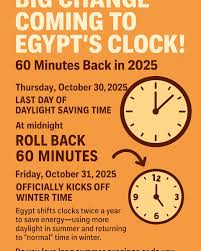The Importance of Daylight Savings Time Changes

Introduction to Daylight Savings Time
Daylight savings time (DST) is a practice that involves setting the clock forward by one hour during the warmer months to extend evening daylight. This change affects billions of people in various countries, primarily emphasizing energy conservation, improved lifestyle, and even economic impacts. Understanding the significance of this twice-yearly adjustment becomes increasingly relevant as debates over its continuation spark discussions globally.
The Current State of Daylight Savings
As of October 2023, many regions, particularly in North America and Europe, adhere to the traditional system of adjusting clocks twice a year. In the UK, daylight savings typically begins on the last Sunday in March and ends on the last Sunday in October. However, the European Union has been in debates about abolishing the change altogether, leading to uncertainty about the future approach to time management. The proposal to discontinue DST was born from concerns about its impact on health and well-being, as studies indicate that the abrupt change can disrupt sleep patterns and increase the risk of heart problems.
Impact on Society and Daily Life
Supporters of DST argue that the practice reduces energy consumption, as prolonged daylight in the evenings encourages outdoor activities and reduces reliance on artificial lighting. Critics, however, argue that there is little evidence to substantiate significant energy savings, especially with modern technology and energy-efficient appliances. Additionally, the transition can cause confusion, impact transportation schedules, and even affect international communication and travel.
Health Considerations
Health experts note that the transition into and out of daylight savings can trigger sleep disturbances and headaches, with studies suggesting a short-term spike in heart attacks and strokes in the days immediately following the switch. As such, some advocate for moving away from the practice altogether or retaining a constant time throughout the year, which would eliminate the biannual adjustment.
Conclusion: Future of Daylight Savings Time
As debates surrounding daylight savings time continue, the potential for reform is on the horizon. Countries are examining the benefits and drawbacks of maintaining this practice, leading to a growing consensus on the need for a review. For readers, understanding the implications of daylight savings time goes beyond just adjusting clocks—it poses questions about health, productivity, and societal norms. With ongoing discussions, the future of DST remains uncertain, yet significant to our daily lives.
